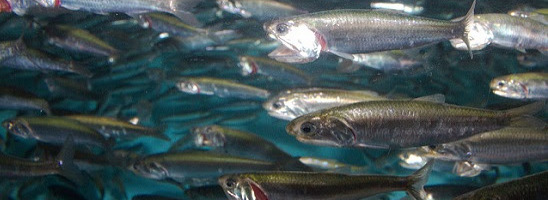
A school of California (northern) anchovies. (Image by Brian Gratwicke via Flickr)
Most invertebrates can detect polarization of light in addition to color and intensity, which helps with target detection, orientation and communication. But a recent study found evidence of the first vertebrate that possesses polarization vision: the northern anchovy. Optic nerve recordings from anchovies have shown that the fish’s eyes show retinal segregation for independent colour and polarization vision, similar to the mechanism observed in invertebrates. This affects the anchovies’ swimming behavior in polarized versus nonpolarized light. Study author hypothesizes that the behaviour is used in nature by the northern anchovy to improve contrast of zooplankton prey, as anchovies are found near the water surface at different times of the day.
Author:
Iñigo Novales Flamarique
Corresponding author:
Inigo Novales Flamarique, Department of Biological Sciences, Simon Fraser University, Email: inigo@sfu.ca
Original paper published in the Proceedings of the Royal Society B: Biological Sciences on September 6, 2017.

